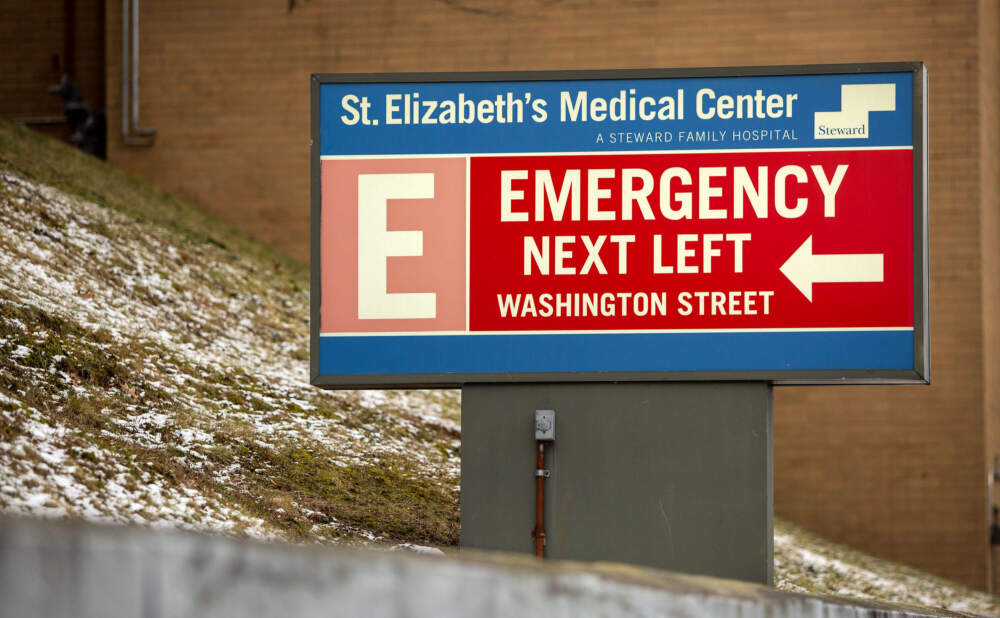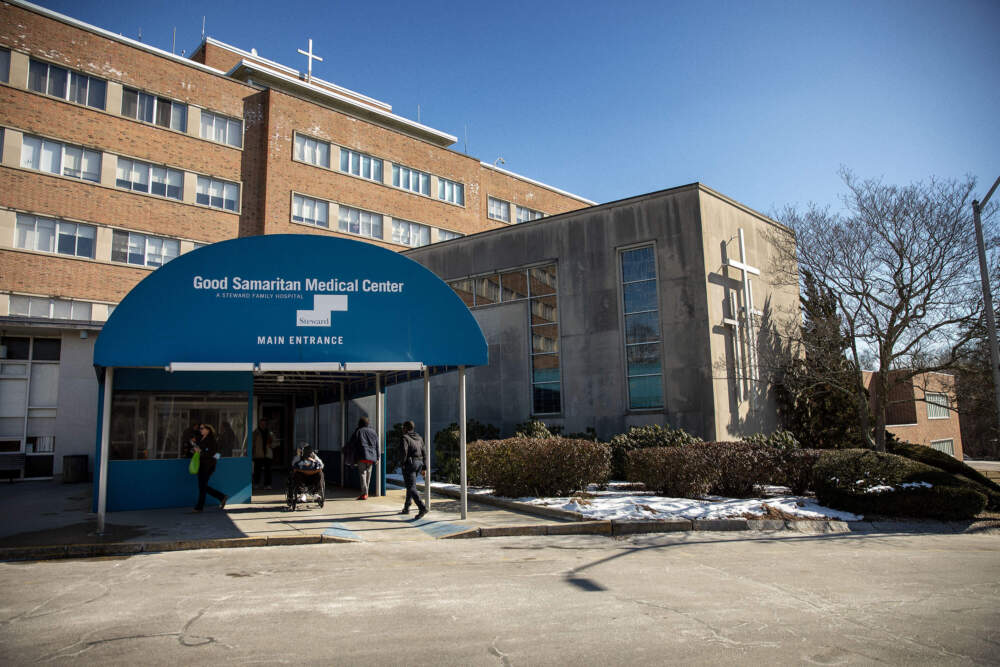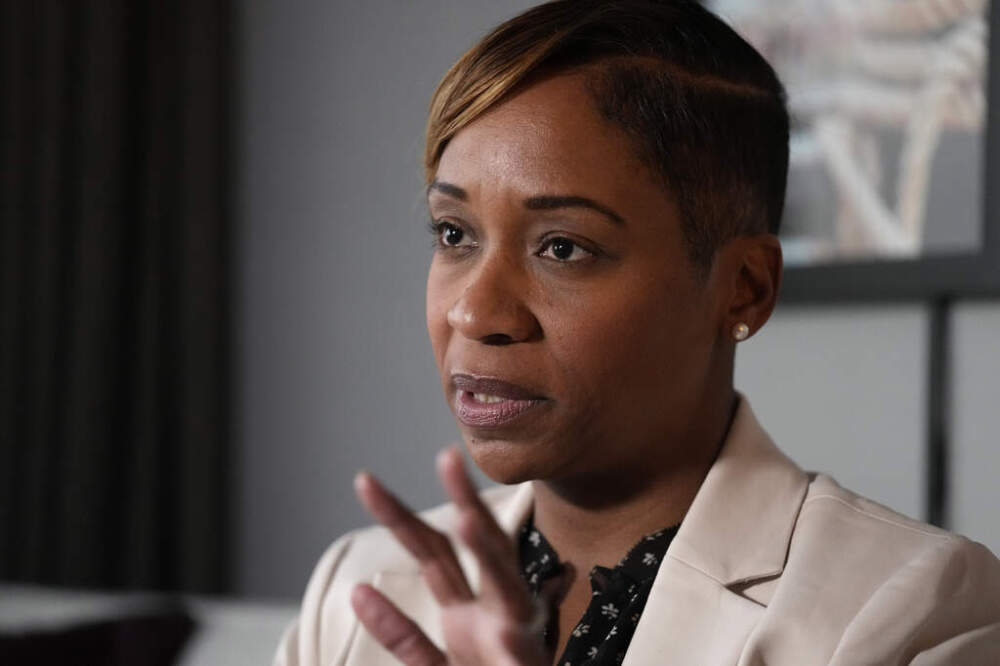Advertisement
The 3rd-largest Mass. hospital system is in bankruptcy. Here’s what you need to know

Editor's Note: This story was included as an excerpt in WBUR's weekly health newsletter, CommonHealth. If you like what you read and want it in your inbox, sign up here.
Early Monday morning, when most Americans were still sleeping, Steward Health Care filed for bankruptcy protection under Chapter 11 of the U.S. bankruptcy code.
The filing came after months of concern and uncertainty about Steward's financial troubles. It represents a remarkable failure for a company that was founded with the promise of saving struggling hospitals, but later amassed crippling amounts of debt and failed to make critical payments to vendors.
The Dallas-based company runs more than 30 hospitals across the country, including eight in Massachusetts. It's the nation's largest private, for-profit hospital chain.
Steward’s chief executive, Ralph de la Torre, a former heart surgeon, said the company has “done everything in its power to operate successfully in a highly challenging health care environment,” and the bankruptcy process will help the company emerge stronger.
Massachusetts Gov. Maura Healey blamed Steward executives for mismanagement and said bankruptcy will lead to more transparency about their business decisions.
“One of the good things about bankruptcy is that Steward and its CEO and its management team will no longer be able to lie,” Healey said Monday.
Here are five things to know about Steward’s bankruptcy:
1. Steward hospitals remain open as usual, for now
The company plans to keep its hospitals open and continue providing care for patients while it restructures. State officials are monitoring Steward’s Massachusetts facilities, tracking supplies and staffing levels. Officials say patients should keep their appointments with Steward providers and feel comfortable going to a Steward emergency room.
“It is safe to get care in Steward facilities,” Dr. Robbie Goldstein, Massachusetts' commissioner of public health, told reporters at the State House hours after the company filed for bankruptcy. “The facilities are open. You should not drive past [them] if you're having chest pain, if you're a pregnant person about to deliver. Please go to the hospital that's closest to you, go to the hospital that's in your community.”
Steward’s local hospitals include: St. Elizabeth’s Medical Center in Brighton, Carney Hospital in Dorchester, Holy Family Hospital in Haverhill and Methuen, Nashoba Valley Medical Center in Ayer, Good Samaritan Medical Center in Brockton, Morton Hospital in Taunton and Saint Anne’s Hospital in Fall River. Norwood Hospital remains closed after severe flooding in 2020.
The company employs an estimated 16,000 people in the state. Their jobs don’t change right now, according to state officials.
2. The bankruptcy process will change Steward as we know it
Bankruptcy has potential upsides. One advantage, according to state officials and bankruptcy experts, is that it provides an orderly process to deal with Steward’s debts and determine what happens with its assets. All of this will be overseen by a court in Texas.
Legal experts and state officials said the court process will also shed more light on a company that has long been shrouded in secrecy. Already, details are starting to emerge about the scale of Steward’s debts.
“We look forward to seeing what is in the various documents that will be before the court, because we need transparency,” Gov. Healey said. “We need clarity about debts and liabilities.”
Healey added that bankruptcy is a step toward getting Steward out of Massachusetts — something both she and Steward officials have said they want.
It’s too soon to know for sure, but eventually, certain Steward hospitals could transition to new owners, while other facilities could close.
“Chapter 11 does not mean that you're shutting down and selling everything off, which I think is what most people think of when they hear the word ‘bankruptcy,’ ” said Ross Martin, a bankruptcy law expert at Boston College. “It's designed to allow a company to continue operating as best it can while it figures out: How much can it pay creditors; can it fix its business to operate.”

Good Samaritan Medical Center, a Steward hospital in Brockton, Mass. (Robin Lubbock/WBUR) 3. Steward owes at least $1 billion — but it could be as much as $10 billion
That’s the range of liabilities the company listed in its initial court filing. More details are expected as the court process continues.
Steward has over 100,000 creditors by its own accounting, including vendors that sell goods and services, as well as the employees on its payroll.
Court records show some of the largest creditors are staffing firms, medical device makers and health technology companies. They include Change Healthcare, Philips North America, Cerner, Medtronic, Abbott Healthcare, General Electric and other big firms.
The federal government is another big creditor: Steward owes $28 million in taxes to the IRS and $32 million in COVID pandemic-related loans to the Center for Medicare and Medicaid Services.
The court process will essentially freeze Steward’s debts as the company works to reorganize. Some of the debts are likely to be waived.
“The reason you need to file for bankruptcy is because you can't pay everyone,” Martin said. “The idea of the system is to stabilize the business [and] get the best value for it you can. Some people are not going to be paid in full.”
4. Accountability remains an open question
Many elected officials have heaped blame on Steward executives for the company’s failure, saying Steward’s leaders profited mightily while the hospitals that serve many vulnerable patients floundered.
"This situation stems from and is rooted in greed, mismanagement and lack of transparency on the part of Steward leadership in Dallas, Texas," Healey said on Monday.
Massachusetts Attorney General Andrea Campbell hinted at the potential for future legal action and said her office’s work in that area is ongoing.
“I take very seriously any effort for this hospital system to make a profit to the detriment of patients,” Campbell said. “And if those efforts have violated the law, those involved will absolutely hear from our office.”
Francis Morrissey, a bankruptcy lawyer in Braintree who is not involved with the Steward case, said bankruptcy is “not a get-out-of-jail card.”
“Businesses in bankruptcy have to play by the same rules as everyone else,” he said. “The attorney general and other regulatory agencies can and will hold these hospitals accountable for meeting all their regulatory obligations.”

Massachusetts Attorney General Andrea Campbell. (Charles Krupa/AP) 5. Mass. officials have a role, but it may be limited
Steward’s roots are in Massachusetts. It was founded here 14 years ago, when a New York private equity firm, Cerberus Capital Management, acquired a group of struggling hospitals from the Archdiocese of Boston. De la Torre has led Steward ever since.
But the company later sold its real estate to Birmingham, Alabama-based Medical Properties Trust, expanded nationally and overseas, and moved its headquarters from Boston to Dallas. A group of Steward doctors eventually acquired control of the company.
The bankruptcy process, too, is playing out far from Massachusetts, in a federal court in Houston.
“There are a lot of unknowns and a lot of variables that we do not have control over in the bankruptcy process,” Campbell noted, “and I'm not naive about that.”
Steward’s hospitals are spread across seven states in addition to Massachusetts: Pennsylvania, Ohio, Florida, Louisiana, Arkansas, Texas and Arizona. Presumably, all of these states have some interest in what happens to the company.
Representatives from Massachusetts will go to the Texas court, and attorneys have already filed documents on behalf of the state and its residents.
“Although Massachusetts was the first state to allow the Debtors [Steward] to operate for-profit hospitals, systematically the Debtors have extracted value from Massachusetts, for among other reasons, to pay substantial dividends to investors and expand their network in other states,” state officials said in a legal brief filed Tuesday.
It’s unclear how long the bankruptcy process will last. But Morrissey said courts can move quickly, even with complicated cases.
“Bankruptcy is designed to do things on an emergency basis,” he said. “The bankruptcy courts are unique that way. They can get stuff done quickly and still protect due process rights.”

